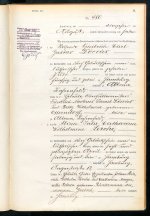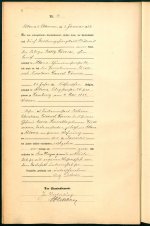Taphrospilus
Well-known member
Bubo blakistoni doerriesi Seebohm, 1895 OD here
Yungipicus canicapillus doerriesi (Hargitt, 1881) OD here
The Eponym Dictionary of Birds claims:
So several questions Fritz or Friedrich (assume Friedrich)? born 1851 or 1852 (assume 1852)? And if there was a brother can we be sure all are for Friedrich Carl Gustav Dörries. Especially if I read this sentence:
Bubo bubo doerriesi Buturlin, 1910 OD Nascha Okhota 1910 , Juni - Nummer , p . 78 (not seen)A second specimen had been procured by Mr. Doerries near Vladivostock,...
Yungipicus canicapillus doerriesi (Hargitt, 1881) OD here
Cerchneis tinnunculus dörriesi Swann, 1920 OD hereHerr Dörries of the Hamburg Zoological Gardens, has since sent me four specimens,....
Dörries coll.
The Eponym Dictionary of Birds claims:
The Key to Scientific NamesBlakiston's Fish Owl ssp. Bubo blakistoni doerriesi Seebohm, 1895
Eurasian Eagle Owl ssp. Bubo bubo doerriesi Buturlin, 1910 NCR [NPRB Bubo bubo ussuriensis]
Grey-capped (Pygmy) Woodpecker ssp. Dendrocopos canicapillus doerriesi Hargitt, 1881
Common Kestrel ssp. Falco tinnunculus doerriesi Swann‚ 1920 NCR [JS Falco tinnunculus tinnunculus]
Fritz Doerries (1851–1953) was a German lepidopterist, collector and explorer in Siberia. He normally collected with his brother.
Friedrich Dörries (1852-1953) German collector, explorer in Siberia (subsp. Bubo blakistoni, syn. Bubo bubo ussuriensis, syn. Falco tinnunculus, subsp. Picoides canicapillus).
So several questions Fritz or Friedrich (assume Friedrich)? born 1851 or 1852 (assume 1852)? And if there was a brother can we be sure all are for Friedrich Carl Gustav Dörries. Especially if I read this sentence:
Dörries hatte die Brüder Henry Gustav D. (1861–1904) und Edmund D. (1865–1958), die als Präparatoren arbeiteten und teils gemeinsam mit Friedrich, teils alleine auf Forschungsreisen gingen.
Last edited:








